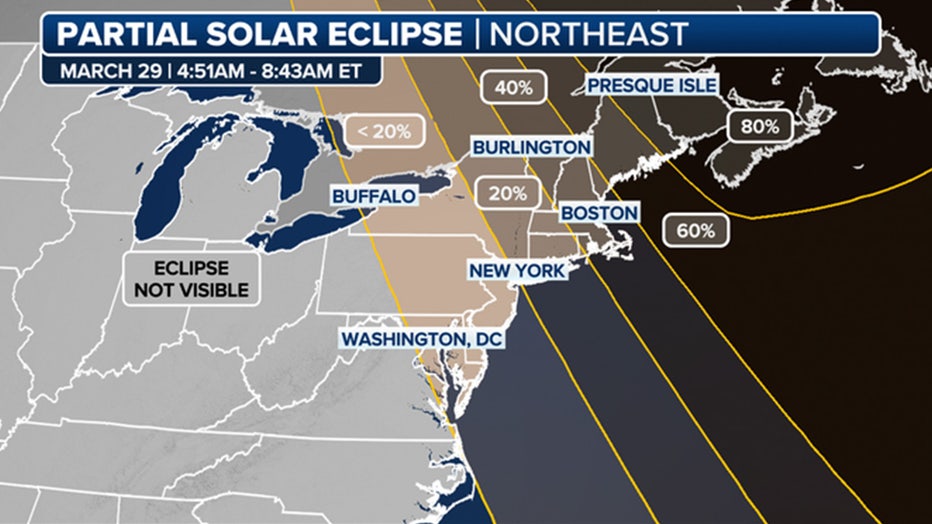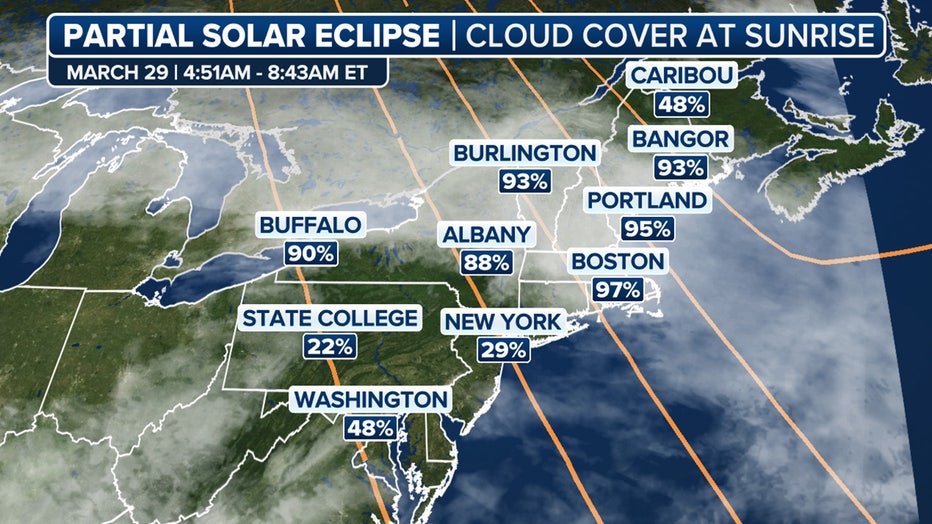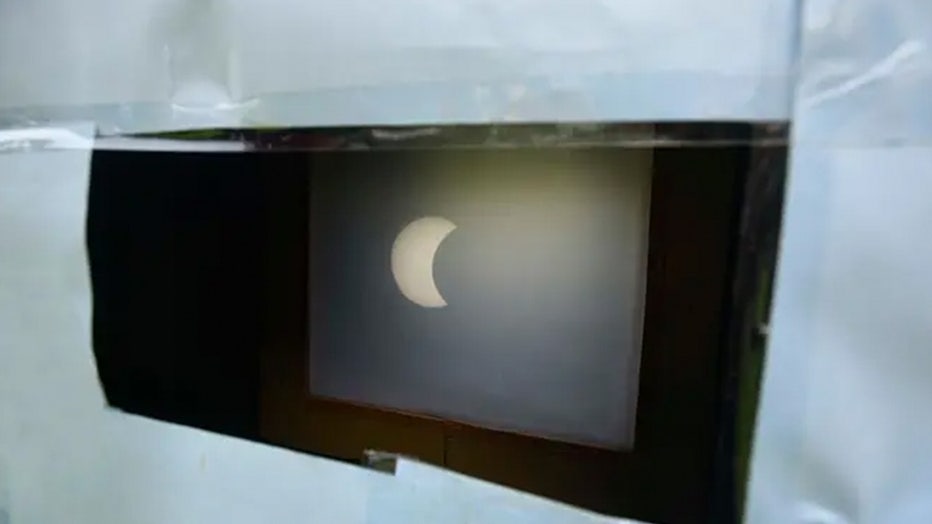Sunrise partial solar eclipse happens Saturday for parts of US
FILE - A partial Solar eclipse is seen just after sunrise over the Queens borough of New York across the East River on November 3, 2013 in New York. (STAN HONDA/AFP via Getty Images)
It’s time to dig out those solar eclipse glasses from last year and have them handy for a partial solar eclipse in the northeastern U.S.
On Saturday, the Moon will pass in front of the Sun, creating a partial eclipse as the lunar shadow falls over the Atlantic Ocean, as well as parts of the U.S. and Canada.
Here’s everything you need to know about this Sun, Moon and Earth alignment happening before breakfast.
Where and when will the partial eclipse be visible?
The eclipse will be visible in Europe, western Africa, eastern Canada and the northeastern U.S. The timing of the event will be better for those across the Atlantic Ocean, who are hours ahead of the U.S.

A map of the Northeast U.S. showing the maximum eclipse on March 29, 2025. (FOX Weather)
In the U.S., this partial eclipse is for the early risers. So grab your coffee or whatever your breakfast of champions is, and step outside with sunrise.
Cities along the Interstate 95 corridor will see a partial eclipse, but it begins before sunrise for places including Boston, New York, and Philadelphia, leaving just a few minutes to see this celestial show before it's over.
The NASA table below shows the timeline of the March 29 eclipse. The farther north you are in the Northeast, the greater your coverage of the Sun. Portland, Maine, will experience 64% coverage, but Washington will see just a sliver of the Sun covered at 1%.
What is the forecast for the partial eclipse?
An early look at this weekend's forecast for the partial eclipse does not bode well for most in the Northeast and mid-Atlantic.
According to the FOX Forecast Center, almost the entire U.S. eclipse zone is forecast to be shrouded in clouds on Saturday morning.
A few days before the eclipse, New York and parts of Pennsylvania have the best forecast with a mostly clear sky. Still, it's early, and cloud cover forecasts can quickly change.

FILE - March 29 cloud cover forecast for the partial eclipse in the Northeast.(FOX Weather)
How to view Saturday's partial eclipse?
Unlike a total solar eclipse – when the Moon’s shadow completely covers the Sun for several minutes – a partial eclipse does not allow you to look directly at the Sun without eye protection at any time.
To view a partial eclipse, you must wear your certified solar eclipse glasses for the entirety of the event. These glasses need to meet the ISO 12312-2 international standard for direct Sun viewing, according to the American Astronomical Society.
Regular sunglasses are not safe for viewing any partial or annular eclipse because sunglasses allow more sunlight than is safe for your eyes.
HOW TO SAFELY WATCH A SOLAR ECLIPSE

FILE - A partially eclipsed sun is reflected on a pinhole camera set up at India Gate, on June 21, 2020 in New Delhi, India. (Photo By Biplov Bhuyan/Hindustan Times via Getty Images)
It’s been nearly a year since the April total solar eclipse. If you are planning to reuse your eclipse glasses, just be sure to inspect the lenses for any scratches or damage. Do not use the glasses if they are damaged or the solar filters are loose from their frames.
For children unable to follow instructions and keep those glasses on (hello, toddler parents), it’s best to view the eclipse indirectly through a pinhole projector or a live video of the event online.
A partial eclipse is also indirectly visible through the shadows you can create with your hands or other objects.

